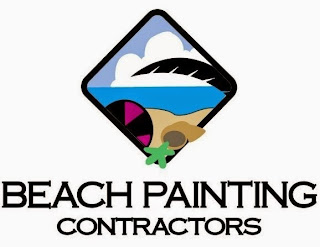If you’ve decided to tackle a painting project and you go to
your local paint store, you may be surprised to learn how many different
primers are available. A primer is used under a finish coat to provide adhesion
to the substrate and seal any stains that may come through the finish coat. This
is a crucial step in the painting process.
 |
| Photo: Courtesy of Sherwin Williams |
Acrylic primer is recommended for siding products. Some siding (LP “Smart Side,” for example) are already factory-primed, which allows you to paint directly without a dedicated primer.
Cedar
requires a product that will block the tannins from coming through the finish
paint and a good slow drying oil is best for this. Cedar is used primarily
because of the high tannin content, which allows the wood to last longer than
most others. The tannins are oils in the wood that will eventually seep through
most acrylics leaving a stain. Most wood siding on the Outer Banks is cedar,
either shakes or lap siding and is subject to this leaching. The tannin
blocking oil products generally take up to 48 hours to dry and clean up with
mineral spirits.
If you have
rusty screws or nails, you will need a rust-inhibiting primer. All rust scale
should be removed before priming. The idea is to build up a high mil thickness
to block the stain from coming through. Once the nail begins to rust inside the wood, the rust
will continue to leach out and, unfortunately, become a matter of routine
annual maintenance...as any painting contractor on the OBX will tell you.
Interior
primers are used for everything from new drywall to wood trim to hiding water
stains. For new smooth drywall, latex “surfacing primers” are best. These
products are thick and meant to be sanded before the final coats are applied.
The application amounts to a skim coat of drywall and is very effective in
hiding seams, which are frequently noticeably after the drywall has been
finished.
On textured
drywall surfaces, inexpensive latex primers can be used as an alternative to the
pricier flat latex finishes. There is no need for a thicker surfacing product.
These primers are also good for drywall repair areas. If your finish is
eggshell, satin, or semi-gloss, primer is essential to ensure that a flat spot
is not evident when the areas is touched up or repainted.
If you have
experienced a water leak, an interior stain blocking oil product will be required.
These products typically dry fast and may require multiple coats to completely
block the stain effectively.
If you
intend to paint wood paneling, cabinets, or trim, you will need to use an oil
primer that both blocks stains and sticks to glossy surfaces. The surface should
be lightly sanded with 220-grit sandpaper before priming to ensure that the
primer has a good bite. Most often, primers for glossy surfaces dry quickly and
clean up with mineral spirits or alcohol.


No comments:
Post a Comment